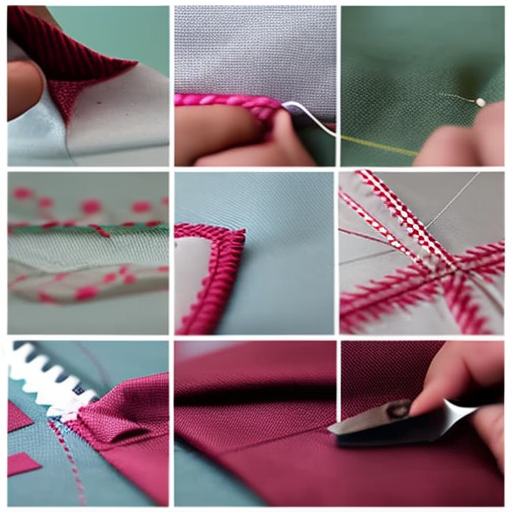 sewing techniques” />
sewing techniques” />
Whether you are a beginner or an experienced sewer, utilizing the best techniques can greatly enhance your sewing projects. These techniques not only ensure the longevity and durability of your creations but also add a professional touch to your work. Here, we present some of the top sewing techniques that every sewing enthusiast should know:
1. Backstitching
Backstitching is an essential technique that strengthens the beginning and end of a seam, preventing it from unraveling. To backstitch, sew a few stitches forward, then reverse the machine and sew the same number of stitches in the opposite direction.
2. French Seams
French seams are used to create a neat and tidy finish on lightweight fabrics. This technique encloses the raw edges within the seam, preventing fraying and adding a polished look to your garments.
To create a French seam, sew the wrong sides of the fabric together with a narrow seam allowance. Trim the seam allowance, press it to one side, then fold the fabric, enclosing the raw edges, and sew a second seam.
3. Understitching
Understitching is used to prevent facings or linings from rolling to the outside of a garment and becoming visible. By sewing a line of stitches close to the seam line, the facing or lining is secured in place, providing a clean finish.
4. Topstitching
Topstitching not only adds decorative detail to your sewing projects but also helps to stabilize seams and edges. This technique involves stitching on the top layer of fabric, usually a few millimeters away from the seam or edge.
Use a longer stitch length and keep your lines straight for a professional look. Topstitching can be applied to hems, pockets, collars, or any visible area where you want to add a touch of style.
5. Stitching Curves and Corners
When sewing curves or corners, it’s essential to pivot the fabric correctly to achieve smooth and precise stitching. To sew curves, sew slowly and manipulate the fabric under the machine’s needle, easing it gently to prevent puckering.
For corners, bring the needle down into the fabric at the corner, lift the presser foot, pivot the fabric, and lower the presser foot again to continue stitching.
6. Pressing
Proper pressing is a crucial step in sewing that sets your stitches and gives your projects a professional finish. Always press your fabric before cutting and after each seam to flatten the stitches and remove any wrinkles.
Use a pressing cloth for delicate fabrics and press the seams open or to one side, depending on the garment’s construction.
By incorporating these best sewing techniques into your sewing repertoire, you can elevate your creations to new heights. Practice them regularly and experiment with different fabrics and projects to master these skills. Remember, sewing is not just a craft; it’s an art form that allows you to showcase your creativity and passion!





Great article! I’m eager to learn more about sewing.
Syed Hasan: What a great article! I’m familiar with some of these techniques, but I’m excited to learn about the others.
This is extremely helpful. Thanks for writing it up!
Fantastic! This article is a great resource for all levels of sewers and I’m sure I’ll learn some invaluable tips!